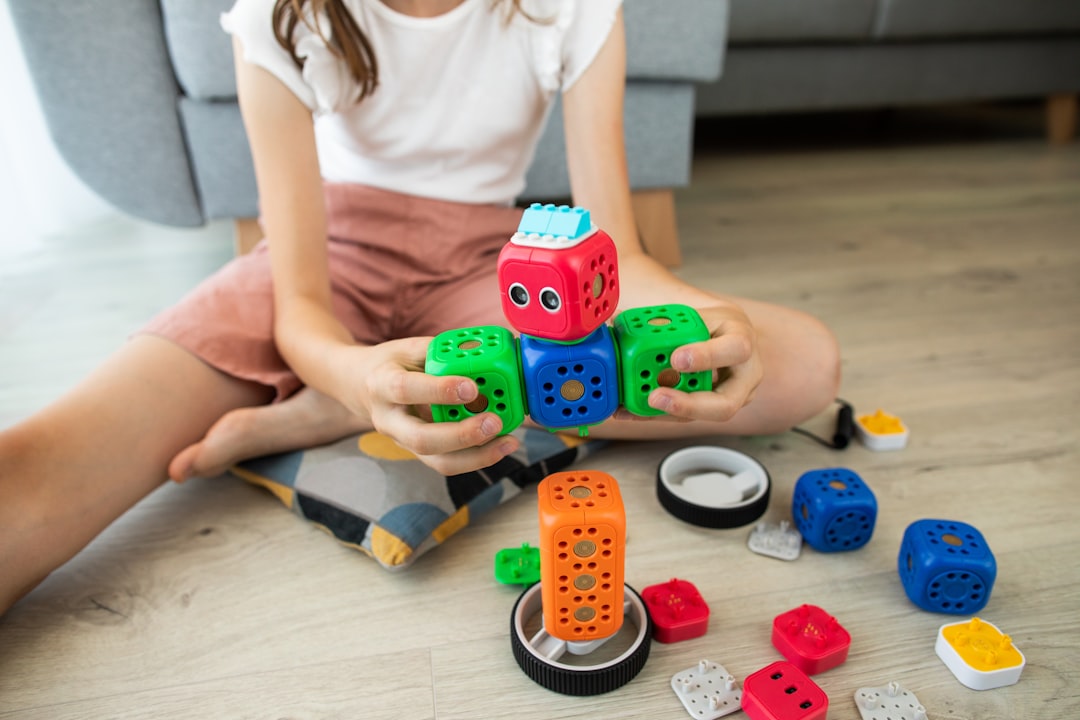Elon Musk, the visionary entrepreneur behind companies like Tesla and SpaceX, has long been known for his ambitious goals and innovative ideas. One area where Musk is particularly focused on revolutionizing is manufacturing. Musk believes that traditional manufacturing processes are outdated and inefficient, and he envisions a future where robots play a central role in the production process.
Musk’s vision for revolutionizing manufacturing is driven by his desire to increase efficiency, reduce costs, and improve the quality of products. He believes that by automating the manufacturing process with robots, companies can produce goods at a faster rate and with greater precision. This, in turn, will lead to lower costs for consumers and a more sustainable future.
Key Takeaways
- Elon Musk aims to revolutionize manufacturing through robotics and automation.
- Tesla Robotics is the future of manufacturing automation, with advanced features and capabilities.
- Tesla Robotics will transform the manufacturing industry, increasing efficiency and productivity.
- The impact of Elon Musk’s robotics on job creation and employment is uncertain, but it may lead to a shift in job roles.
- Tesla Robotics offers significant advantages over traditional manufacturing, including increased speed and accuracy.
Tesla Robotics: The Future of Manufacturing Automation
At the forefront of Musk’s vision for revolutionizing manufacturing is Tesla Robotics, a program dedicated to developing advanced robots that can automate various aspects of the production process. Tesla Robotics aims to create a fully automated manufacturing system that can produce electric vehicles at a much faster rate than traditional methods.
The robots developed by Tesla are designed to perform a wide range of tasks, from welding and painting to assembly and packaging. These robots are equipped with advanced sensors and artificial intelligence capabilities, allowing them to navigate complex environments and make decisions in real-time.
Elon Musk’s Latest Robots: Features and Capabilities
One of the latest robots developed by Tesla is the “TeslaBot,” a humanoid robot designed to work alongside humans in manufacturing facilities. The TeslaBot is equipped with advanced sensors and cameras that allow it to perceive its environment and interact with objects in a human-like manner.
The TeslaBot is capable of performing a wide range of tasks, including lifting heavy objects, manipulating tools, and even operating machinery. It is designed to be highly dexterous and adaptable, allowing it to perform tasks that would typically require human intervention.
Another robot developed by Tesla is the “GigaPress,” a massive machine that is used to produce the body of Tesla’s electric vehicles. The GigaPress is capable of exerting immense pressure to shape and mold metal, allowing for the production of complex and lightweight vehicle components.
How Tesla Robotics Will Transform the Manufacturing Industry
| Metrics | Description |
|---|---|
| Increased Efficiency | Tesla Robotics will automate repetitive tasks, reducing the time and effort required to complete them. |
| Improved Quality Control | The use of robotics will ensure consistent and accurate production, reducing the likelihood of errors and defects. |
| Reduced Labor Costs | By automating tasks, Tesla Robotics will reduce the need for human labor, resulting in lower labor costs for manufacturers. |
| Increased Safety | Robots can perform dangerous tasks, reducing the risk of injury to human workers. |
| Flexibility | Tesla Robotics can be programmed to perform a variety of tasks, making them adaptable to changing production needs. |
| Scalability | As production needs increase, Tesla Robotics can be easily scaled up to meet demand. |
Tesla’s robots have the potential to revolutionize the manufacturing industry in several ways. First and foremost, they can greatly increase efficiency by automating repetitive and labor-intensive tasks. This allows companies to produce goods at a much faster rate, reducing lead times and increasing overall productivity.
In addition to increased efficiency, Tesla’s robots can also help reduce costs. By automating the manufacturing process, companies can eliminate the need for human labor, which is often one of the biggest expenses in manufacturing. This can lead to significant cost savings, which can be passed on to consumers in the form of lower prices.
Furthermore, Tesla’s robots can improve the quality of products by reducing human error. Robots are capable of performing tasks with greater precision and accuracy than humans, resulting in fewer defects and higher-quality products.
The Impact of Elon Musk’s Robotics on Job Creation and Employment
While the automation of manufacturing processes has the potential to increase efficiency and reduce costs, it also raises concerns about job displacement and unemployment. As robots take over tasks that were previously performed by humans, there is a risk that many workers will be left without jobs.
However, Musk believes that the automation of manufacturing processes will not necessarily lead to job loss, but rather a shift in the types of jobs available. He argues that as robots take over repetitive and labor-intensive tasks, humans will be freed up to focus on more creative and complex tasks.
To mitigate the potential impact on employment, Musk has called for the implementation of retraining programs to help workers transition into new roles. These programs would provide workers with the skills and knowledge needed to work alongside robots and take on more advanced tasks.
Tesla Robotics vs. Traditional Manufacturing: A Comparison

When comparing Tesla’s robotic manufacturing process to traditional manufacturing processes, there are several advantages and disadvantages to consider.
One of the main advantages of Tesla’s robotic manufacturing process is its speed and efficiency. Robots can work at a much faster rate than humans, allowing for the production of goods at a much higher volume. This can help companies meet increasing demand and reduce lead times.
Another advantage of Tesla’s robotic manufacturing process is its precision and accuracy. Robots are capable of performing tasks with greater precision than humans, resulting in fewer defects and higher-quality products. This can lead to increased customer satisfaction and reduced costs associated with rework and warranty claims.
However, there are also some disadvantages to Tesla’s robotic manufacturing process. One of the main challenges is the initial investment required to implement a fully automated system. The cost of purchasing and maintaining robots can be significant, especially for small and medium-sized companies.
Another challenge is the potential for technical difficulties and malfunctions. Robots are complex machines that require regular maintenance and troubleshooting. If a robot breaks down or malfunctions, it can disrupt the entire production process and lead to costly downtime.
The Role of Artificial Intelligence in Tesla Robotics
Artificial intelligence (AI) plays a crucial role in Tesla’s robotics program. AI allows robots to perceive their environment, make decisions in real-time, and adapt to changing conditions. This enables them to perform complex tasks that would typically require human intervention.
One of the key benefits of AI in Tesla’s robotics program is its ability to learn and improve over time. By analyzing data from previous tasks, robots can identify patterns and make adjustments to their behavior to optimize performance. This allows them to continuously improve their efficiency and effectiveness.
Furthermore, AI enables robots to collaborate with humans in a seamless manner. Robots can understand human commands, interpret gestures, and even anticipate human needs. This makes them highly adaptable and capable of working alongside humans in a cooperative and productive manner.
Challenges and Limitations of Tesla Robotics
While Tesla’s robotics program holds great promise, there are several challenges and limitations that need to be addressed.
One of the main challenges is the complexity of implementing a fully automated system. Integrating robots into existing manufacturing processes can be a complex and time-consuming process. It requires careful planning, coordination, and testing to ensure that the robots can seamlessly integrate with the existing infrastructure.
Another challenge is the potential for technical difficulties and malfunctions. Robots are complex machines that require regular maintenance and troubleshooting. If a robot breaks down or malfunctions, it can disrupt the entire production process and lead to costly downtime.
Furthermore, there are limitations to what robots can currently do. While they are capable of performing a wide range of tasks, there are still some tasks that require human intervention. For example, tasks that require fine motor skills or complex decision-making are still better suited for humans.
The Future of Manufacturing: Predictions and Forecasts
The future of manufacturing is likely to be heavily influenced by Elon Musk’s robotics program. As Tesla continues to develop and refine its robots, we can expect to see further innovation and development in the field.
One prediction for the future of manufacturing is the widespread adoption of robotic systems. As the cost of robots decreases and their capabilities improve, more companies are likely to invest in automation technologies. This will lead to a shift towards fully automated manufacturing systems that can produce goods at a much faster rate than traditional methods.
Another prediction is the integration of AI into manufacturing processes. AI has the potential to greatly improve the efficiency and effectiveness of robots by enabling them to learn and adapt over time. This will lead to more intelligent and autonomous robots that can perform complex tasks with minimal human intervention.
Elon Musk’s Robotics and the Future of Manufacturing
Elon Musk’s vision for revolutionizing manufacturing through robotics holds great promise for the future. By automating the production process, companies can increase efficiency, reduce costs, and improve the quality of products. However, there are also challenges and limitations that need to be addressed.
While there are concerns about job displacement and unemployment, Musk believes that the automation of manufacturing processes will lead to a shift in the types of jobs available rather than job loss. He advocates for the implementation of retraining programs to help workers transition into new roles.
Overall, Elon Musk’s robotics program has the potential to transform the manufacturing industry and pave the way for a more efficient and sustainable future. As Tesla continues to develop and refine its robots, we can expect to see further innovation and development in the field. The future of manufacturing is likely to be heavily influenced by Musk’s vision and the advancements made in robotics and AI.
If you’re fascinated by Elon Musk’s new robots and want to learn more about the world of robotics, you should definitely check out this informative article on robotics engineer education. It provides valuable insights into the skills and knowledge required to pursue a career in this exciting field. Whether you’re a student considering a degree in robotics or an experienced professional looking to upskill, this article will guide you through the educational pathways and resources available. Don’t miss out on this opportunity to dive deeper into the world of robotics! Read more here.



Leave a Reply